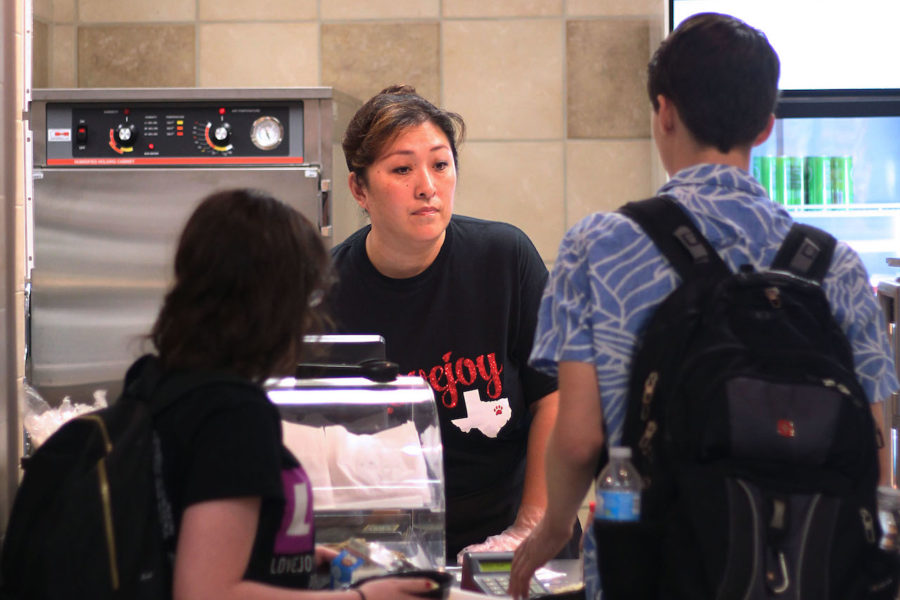Behind the counter
Lunch line food, preparation, and choices demystified
The school nutrition department, a self-funded program, works to create healthy and delicious food options for students.
September 22, 2016
For decades, movies and books have developed the stereotype of questionable lunches. So many campers and students envision lump-ish lunches and wonder what they were really eating on that tray. But here at the high school, the food service and cafeteria staff aim at replacing that stereotype with health-conscious meals based on careful attention to student input.
For sophomore Lyndsey Toft, it’s also convenient.
“I don’t have a lot of time at night to pack my lunch every day and bring it to school, and I don’t really mind the food that they’re serving,” Toft said. “For me it’s just the convenience of being able to buy.”
The food that ends up in the lunches of students goes through a careful process before arrival. According to district lunch director Mat McCarty, the process begins with menu planning. They make an effort to “stay on trend with what’s popular,” McCarty said. McCarty added that this also leads to more students eating in the cafeteria.
To the cafeteria staff, it’s important to serve healthy, well-priced food that is also delicious.
“If it’s not tasting good, it’ll go in the trash,” McCarty said. “We don’t want healthy trashcans. We’re wanting foods that students enjoy.”
The food program is the only program in the school that is self-funding, McCarty said. Instead of being given money from the government or school, they are given a budget for food, and are expected to make a profit or break even by selling their foods. Schools who are on the national school lunch program would be given funds, but Lovejoy is not.
For this reason, the cafeteria provides sampling, and new food choices are determined from student feedback. Sometimes outside sources are also used. For example, cafeteria directors organized a partnership with Chick-fil-A after a Student Council meeting with the cafeteria directors when students mentioned they would like to see foods from outside the district.
McCarty revealed that they have plans to improve the cafeteria functionality with digital menu boards, digital signage which will allow student to respond to surveys via text message, and a “SurveyMonkey” online poll to parents and students. Installation of the digital design is scheduled to begin in the next few weeks.
“SurveyMonkeys [will be sent] to students and parents to get feedback on what we are doing, if they like what we are doing, or if they would like to see us bring in some other products or go in a different direction,” McCarty said. “We can get that feedback and try to adjust our program with the needs of the students.”
Based on the menu planning, the cafeteria staff then plans what to order based on the budget. They are part of a co-op that helps them appropriately plan their purchases.
They receive shipments from local Paradise Produce and local bakery, Kurz Bread. The bread is whole grain, and most of the groceries come from Sysco, which supplies restaurants nationwide. Nothing is fried; the food is either baked or steamed.
“The hamburger patties come frozen, so they’re 100 percent pure beef,” cafeteria manager Jackie Palovik said. “There’s no fillers; they’re not soy byproduct like people have heard of.”
The cafeteria receives their meat pre-cooked and frozen to ensure that they don’t serve any raw meat or contaminated food. The only raw meat in the kitchen is the chicken strips.
“Those are put separately from everything,” Palovik said. “That’s why everybody loves them.”
Cafeteria staff look forward and prepare for the incoming improvements, and will continue their attempts to attract students to buy their lunches at school.
”I actually like [the food] a lot more now that I actually found out about the [health status],” Toft said.




